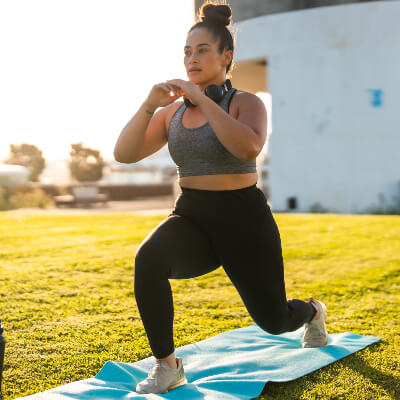 We’ve all heard “sitting is the new smoking,” but what does that actually mean for your spine, your posture—and your long-term health?
We’ve all heard “sitting is the new smoking,” but what does that actually mean for your spine, your posture—and your long-term health?
At Effortless Superhuman, we see it every week: clients coming in with chronic back pain, disc issues, neck stiffness, and nerve symptoms—and for many, the culprit isn’t a big injury.
It’s sitting.
The Posture Problem
When you sit for long periods—especially in poor alignment—you increase spinal disc pressure, restrict blood flow to postural muscles, and load your joints in ways they’re not designed for. Over time, this leads to:
- Reduced core activation
- Pelvic floor dysfunction
- Decreased VO2 max & lymphatic flow
- Thoracic stiffness and forward head posture
- Compensatory movement patterns and pain
And yes, studies confirm this. Sitting for 8+ hours per day increases pressure on your spinal discs by up to 40%.Even worse? When you slouch forward at a screen, that pressure can double.
This isn’t about demonising chairs. It’s about what happens when sitting becomes your default setting.
How to Reverse It: A Movement Prescription
If you’re stuck at a desk, the answer isn’t just a better chair—it’s regular, intentional movement. Here’s what we recommend clinically (and do ourselves):
1. The Rebounder Reset
Just 5-10 minutes on a mini trampoline (rebounder) a few times a day can improve lymphatic flow, joint nutrition, and spinal decompression. It’s gentle, safe, and surprisingly effective for people with stiff backs and poor circulation from sitting. Plus, it’s fun—and you’ll feel noticeably clearer afterward.
2. The Wall Exercise (Posture Reset)
This is one of our favourites to retrain postural awareness and spinal alignment. It looks deceptively simple, but when done properly, it’s powerful.
We recommend doing it for 1-2 minutes, multiple times per day—especially after sitting.
3. Daily Yoga for Posture
Mobility and breath-based movement is a non-negotiable for modern desk workers. Even 10-15 minutes of yoga daily can restore shoulder mobility, spinal length, and hip openness.
Don’t overthink it. Choose something short, gentle, and consistent.
4. Standing Desks—Not a Magic Fix
Standing desks have their place, but they’re not a cure-all. Just standing for 8 hours still loads your body if you’re not moving well.
Instead, we recommend a movement cycle:
- Sit for 20-30 mins
- Stand for 15-20 mins
- Do 2-3 minutes of mobility or posture work. Then repeat.
Your body isn’t designed for stillness. It’s designed for variation.
Bottom Line: Your Chair Isn’t the Problem. Inactivity Is.
You don’t need to quit your job or ditch your desk—you just need to build micro-movements into your day that keep your spine nourished, your joints fluid, and your muscles working the way they’re supposed to.
Chronic back pain, postural collapse, shoulder tension—it’s not just from “getting old.” It’s from long-term stagnation.
If you’re ready to move differently, we’ll be posting video demos of our go-to posture reset exercises all week. Or if you want personalised support, reach out—we’re here to help.
